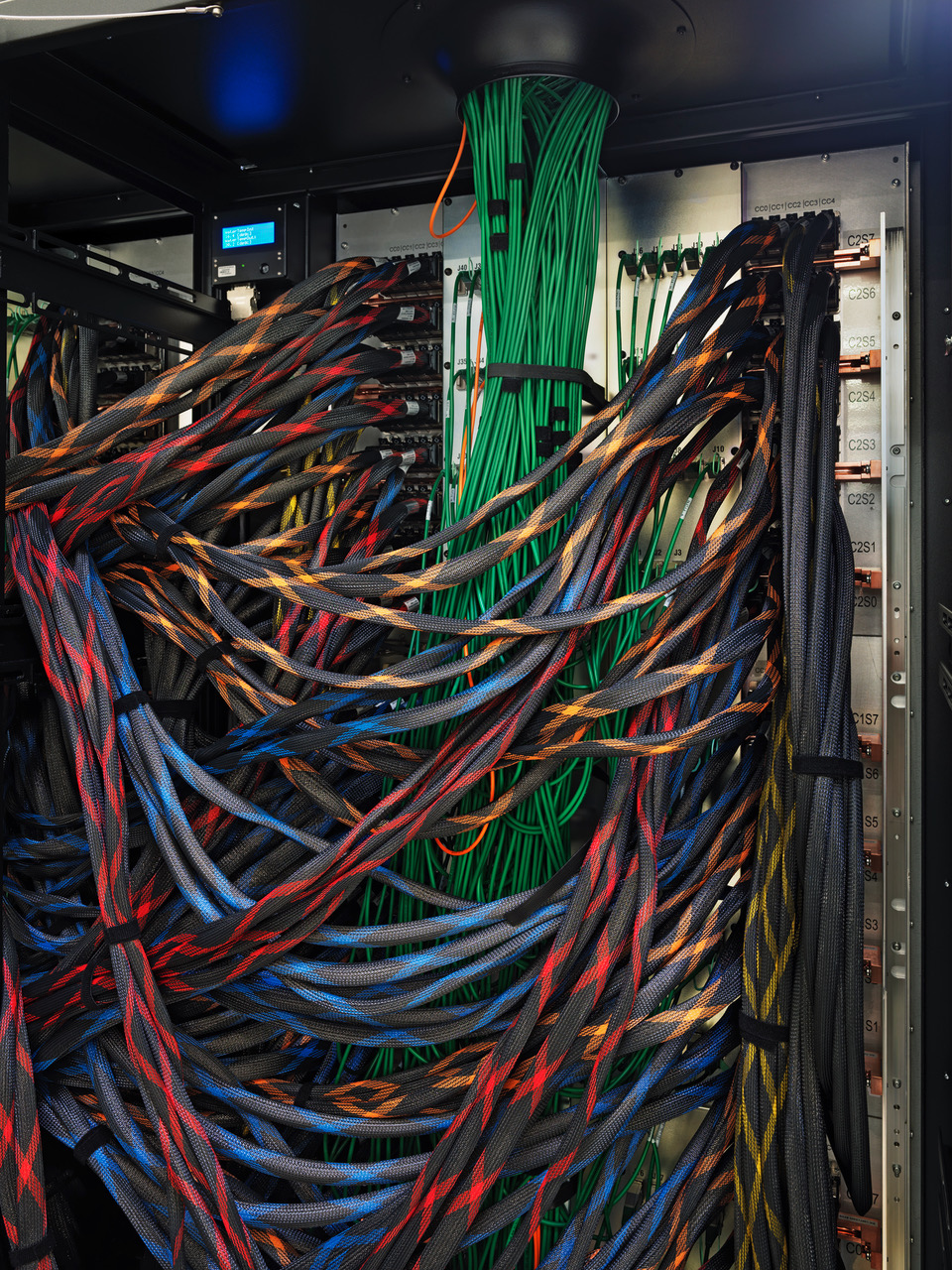«Data Centers» and «Digital Infrastructures»
Andrea Helbling
For my contribution I have chosen the example of CSCS in Lugano.
It plays an important role in the research work for the Collegium Helveticum.
It plays an important role in the research work for the Collegium Helveticum.
Text from the current exhibition at Museum für Gestaltung:
Digital Infrastructures
Ephemerality, dematerialization, and speed are terms that resonate when we think of digitalization. Gigantic infrastructures underpin every application and every internet-enabled device. These data centers, power plants, and fiber-optic networks exist in our midst – yet usually remain hidden from view. Their architectural design and the way in which they are integrated into their surroundings are geared to the technical, economic, and political precepts of an increasingly digital society.
The architectural photographer Andrea Helbling set out with her camera on an expedition through the spaces in which digital infrastructures materialize. Her approach to these places varies considerably: Hebling created these black-and-white images without the tripod that she generally uses, shooting them as fleeting hand-held impressions. Rather than capturing quantifiable information about a particular situation, they hint at sensations and atmospheres that envelop us in the mostly deserted spaces: the haptic and olfactory traits of concrete and steel, sounds and temperatures perhaps. These are things that may strike us and move us in a particular situation, yet remain virtually impossible to classify. Shot on analogue film, sometimes underexposed and sometimes overexposed, the images, with their unpolished and direct nature, call into question the iconography of these technological universes, always showcased in the media as a series of brightly lit, sanitized spaces devoid of any extraneous elements.
Helbling adopted a different strategy in her color photographs, here closely studying the spaces and infrastructure facilities she encountered with her camera in order to transform them into visually comprehensible and compelling images. She embeds them in the urban or rural landscapes and into the times and cultures in which they are located. Infused with knowledge of the invisible, these photographs provide a glimpse into the built reality of the digital world.
Source:
https://www.planetdigital.ch/en/project/digitale-infrastrukturen
![]()
Digital Infrastructures
Ephemerality, dematerialization, and speed are terms that resonate when we think of digitalization. Gigantic infrastructures underpin every application and every internet-enabled device. These data centers, power plants, and fiber-optic networks exist in our midst – yet usually remain hidden from view. Their architectural design and the way in which they are integrated into their surroundings are geared to the technical, economic, and political precepts of an increasingly digital society.
The architectural photographer Andrea Helbling set out with her camera on an expedition through the spaces in which digital infrastructures materialize. Her approach to these places varies considerably: Hebling created these black-and-white images without the tripod that she generally uses, shooting them as fleeting hand-held impressions. Rather than capturing quantifiable information about a particular situation, they hint at sensations and atmospheres that envelop us in the mostly deserted spaces: the haptic and olfactory traits of concrete and steel, sounds and temperatures perhaps. These are things that may strike us and move us in a particular situation, yet remain virtually impossible to classify. Shot on analogue film, sometimes underexposed and sometimes overexposed, the images, with their unpolished and direct nature, call into question the iconography of these technological universes, always showcased in the media as a series of brightly lit, sanitized spaces devoid of any extraneous elements.
Helbling adopted a different strategy in her color photographs, here closely studying the spaces and infrastructure facilities she encountered with her camera in order to transform them into visually comprehensible and compelling images. She embeds them in the urban or rural landscapes and into the times and cultures in which they are located. Infused with knowledge of the invisible, these photographs provide a glimpse into the built reality of the digital world.
Source:
https://www.planetdigital.ch/en/project/digitale-infrastrukturen

Andrea Helbling is a photographer who spezializes in architecture. She does photography for architectural offices, magazines, and the public sector in the field of building construction and civil engineering. Her images are published in books, trade journals, and magazines. Helbling is also a freelance architectural photographer who persues her own independent photographic projects under the name Arazebra. In 2017, the monograph Vertreter der Gattung Haus, which included images from her long-term Buildings and Conglomerates project, was published by ScheideggerSpiess. She is represented by these images in the collection of Fotostiftung Schweiz. Also in 2017, she received the Swiss Photo Award in the category of architectural photography. She completed her training as a photographer at the Schule für Gestaltung Zürich (now Zurich University of the Arts) in the specialist class for photography from 1987 to 1991.